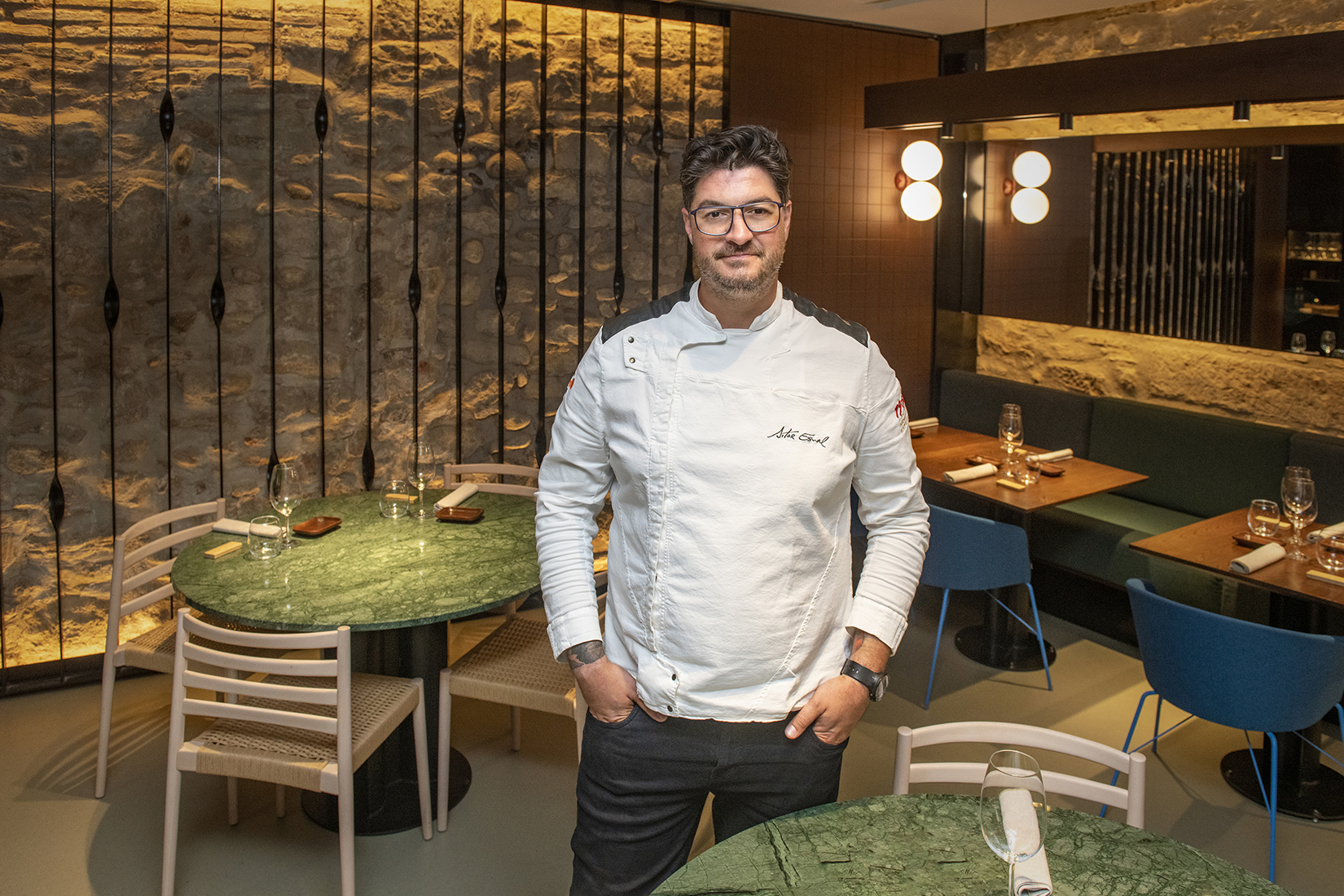“Gastronomy has been my passion since I was a child. I like getting lost in the kitchen, discovering flavours and creating new dishes. My restaurant is my home, my world, where you are all invited to enter”
Our destination is Logroño, which is in the heart of the Rioja region, and 135km drive from Bilbao airport on the Northern Coast of Spain. Chef Aitor Esnal awaits us in his new restaurant just opened months ago. Aitor Esnal is originally from Zarauz, but calls home to Logroño. Since his childhood he has lived immersed in artisan creativity and a taste for cooking. He has had the good fortune to train with the greatest chefs. He studied at the Luis Irizar Cookery School in San Sebastian, where he had the opportunity to learn at restaurants such as Arzak, Martín Berasategui Group and Miramón, owned by the Arbelaitz family.
Chef Aitor never rests in his search for new ideas with which to feel fulfilled in his relationship with cuisine and gastronomy. His first dream materialised in Logroño in 2007 under the name of Marinée, a restaurant where he was able to transmit his taste for raw materials and authentic flavour. His second dream was called Wine Fandango, also in the capital of La Rioja. And now it is time to move forward and he just open Aitor Esnal Restaurante in the old town of Logroño.
CityPages Magazine has a chat with Aitor to find out more about his new gastronomic challenge.

CityPages Magazine: Opening a restaurant in a pandemic could not have been easy. How stressed were you?
Aitor Esnal: The truth is that it was not an easy task; I still have the twitch in my left eye. I had to make a very important decision: to go ahead or not. I spent weeks thinking about it until I finally gained momentum and decided to go ahead with all the consequences. It has been a bumpy road, but I made it: I opened the restaurant I dreamed of.
CPM: What has been the hardest part of the making of the restaurant?
AE: Except for the context in which we were (and still are), with some uncertainty in the face of restrictions and so on, it has been a pretty sweet work and start-up. I have had a great team of professionals who have taken care of all the problems that have arisen. Perhaps where I had to fight the hardest was in getting the kitchen into the restaurant’s dining room.
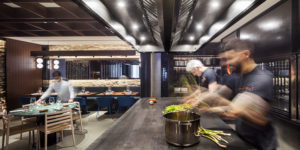
CPM: Why did you choose Logroño?
AE: We chose Logroño in 2007. We were looking at various places in different cities in the north of Spain, even in the south of France (Saint-Jean-de-Luz, Biarritz…) When we saw other places, we realised that Logroño was a fantastic place because we had the opportunity to offer a different gastronomy from what was available at the time. And we were right to open what was my first restaurant: Marinée.
CPM: What´s the idea behind AITOR ESNAL?
AE: Enjoying and transmitting that enjoyment through the language of gastronomy. Aitor Esnal is the result of a desire to continue evolving. I want to create a space where I can offer my cuisine in an open way, without ties, with the commitment to enrich our environment and to contribute our small grain of sand to the evolution of the gastronomy of La Rioja.
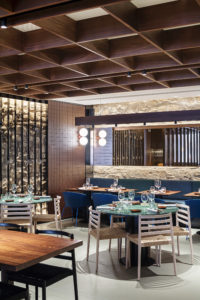
CPM: Local ingredients and raw materials are the essence of your gastronomic offer, what you define as local cuisine sin ataduras (relaxed cuisine). What can guests expect of your brand-new menus Entorno and Sin Ataduras?
AE: Well actually I like to talk about local products and ingredients from all over the world. When guests come to the restaurant they will find two proposals that come out of the concept of “Cuisine from the Surroundings with no strings attached” in this way:
Entorno Menu, in which we offer in seven dishes a cuisine that is based on local, local produce, reaching as far as the coasts of the Basque Country and where we subtly apply the ingredients that we discover on our travels.
Sin Ataduras Menu, in this case we offer in eleven dishes a cuisine that is also based on local, local produce but with more daring, creative and surprising dishes.
We are privileged to have one of the best vegetable gardens in Spain, resulting in exceptional vegetables grown in the different valleys. For example, we have daily (or in season) veal, lamb, organic eggs, mushrooms, truffles, fruit trees, olive trees, artichokes, cardoons, tomatoes, peas, asparagus, etc. And as if that wasn’t enough, the Cantabrian Sea is just an hour and a half away.

CPM: What makes Basque cuisine unique?
AE: Basque cuisine is unique thanks to the great tradition that has been cultivated since time immemorial. I come from a village called Zarauz, near San Sebastian, and since we were little we friends used to get together as a group to have dinner together, cooking for ourselves. There are so many factors… and perhaps the most recent ones are thanks to a few great chefs who got together with a single purpose: to extol Basque gastronomy and show it to the world.
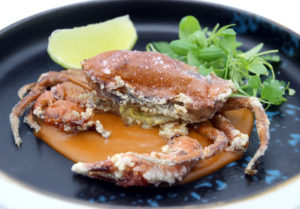
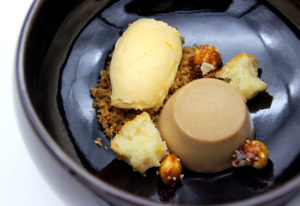
CPM: You are aware of your surrounding and all the raw materials offered by the Basque Country, La Rioja and other areas. Are there any new ingredients that you have recently started using?
AE: I recently received Thai green papaya and have been working on making an appetizer with the flavour of the Som Tam salad. I managed to make an ice cream that is really delicious. I am now working on fermenting vegetables such as daikon and cardoon.
CPM: Is there an element of other food cultures you admire or have had influence your work, and why?
AE: I love the Thai way of working with chillies; in fact, it’s the way I use in my kitchen. It is so interesting to me because it allows you to savour the ingredients or the product you are eating, while enjoying the intensity of the spiciness. I also really like the apparent simplicity of many Japanese recipes that turn out to be super special and complex, like a simple dashy, for example.
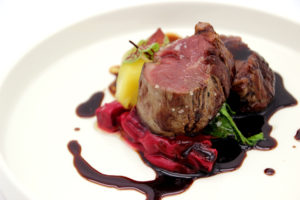
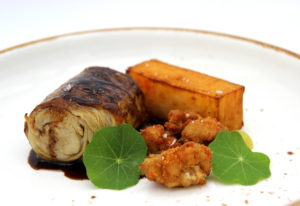
CPM: How do you work creatively with your food? Do you have a process when creating new dishes?
AE: I actually try to follow a process, but it hardly ever works. I start thinking in my head about a certain product, I think about the different applications, I write down everything that comes to mind and I start testing. But suddenly, while I’m doing something else, the light bulb comes on with a touch that was missing or something that was left over, or the technique to apply and… WHAM! I hit the key.
CPM: Logroño is rightfully one of the food capitals of the world, with a fierce competition. Do you think that can be helpful or a disadvantage?
AE: In my opinion it is very good. Because having more colleagues who want to do their job well adds value to the environment, strengthens our community and that will attract more public which will benefit all of us.
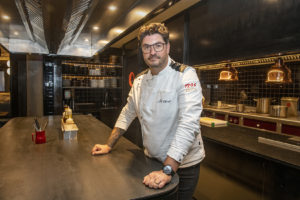
CPM: It has been nearly a decade and a half since you opened Marinée, your first project. What is the most surprising thing that has happened in your career during the past decade? And where do you want to go in the next 10 years?
AE: In the last 10 years I have had the opportunity to learn to be a better manager and entrepreneur thanks to the second restaurant I opened in 2014, Wine Fandango. I went from having a small restaurant with 6 employees as was the Marinée to a larger and more ambitious one with almost 30 employees, with different turnover requirements, a larger scale purchase management and a very high occupancy level. This made me evolve as a manager and businessman, as my day-to-day work was not in the kitchen, although I was at the kitchen during busy times, as the saying goes: the goat goes to the mountain.
In 10 years’ time I see myself settled, with a consolidated project (Aitor Esnal), following excellence in our processes, cooking, training and creating new dishes, and surely encouraging the people around me to create new projects, in which I will also be involved, but without leaving my home and my kitchen.
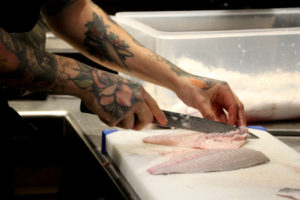
INSTAGRAM: @aitoresnal

